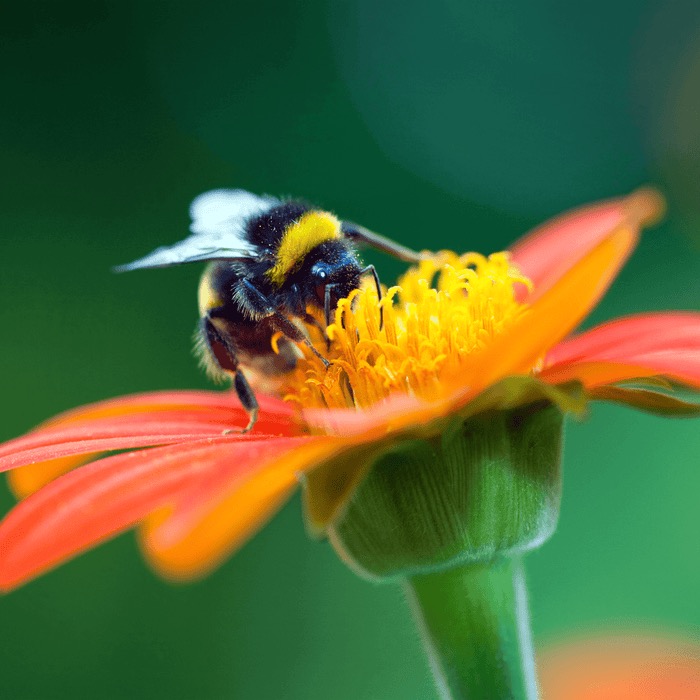
Hi, Earth Rangers!
I’m Sarah Bayliff, the BC Interior Program Manager with the Nature Conservancy of Canada (NCC), and I’m back again this year at the Bunchgrass Hills Conservation Area south of Kamloops, British Columbia! This unique mix of grasslands, forests, and wetlands supports a wide range of species, including the Western Bumblebee, and my work here continues to focus on protecting them!
Even though there are over 250 types of bumblebees, the Western Bumblebee is one you can spot right away: it has a yellow band across its middle and a little white “tail” at the tip of its abdomen. Once among the most common bumblebees in western Canada and the western United States, these fuzzy pollinators have become much rarer due to habitat loss, pesticides, and diseases spread by commercial bees used in farming. That’s why protected places like Bunchgrass Hills are so important, as they give bumblebees a safe space to feed and nest.

Unlike honeybees, Western Bumblebees don’t live in hives. Instead, they often nest underground in abandoned rodent burrows, grassy mounds, or rotting logs. Each spring, a queen wakes up from hibernation and starts a brand new colony all on her own! She lays eggs, feeds the first larvae, and after a few weeks, her first worker bees hatch to help her gather nectar and pollen. By the end of summer, the colony has grown to include males and new queens, who leave the nest to mate. The workers, males, and the original queen die off in the fall and only the new queens survive to restart the cycle next spring!
The Western Bumblebee is also a generalist forager, which means it can eat nectar and pollen from lots of different flowers. It needs blossoms from early spring through late fall to keep its colony healthy and that’s why conserving diverse habitats like Bunchgrass Hills, where wildflowers bloom all season long, is critical for their survival.

Unfortunately, this once-common species is now considered at risk. By protecting the Bunchgrass Hills Conservation Area, we’re helping to make sure the Western Bumblebee and other pollinators have what they need to thrive.
Want to get involved? You can support pollinators by planting native flowers in your yard or neighbourhood. And if you’d like to support my work, check out the Adoptions section in the Earth Rangers App or visit the Earth Rangers Shop to get your very own Bumblebee Adoption Kit!


Sounds interesting!
I think the bee is pollinating
Cool
Awesome
I think it’s cool and cute
Okay at. Is. Good!!!!
I do not like beans. I got some by a bee on my first day of school once it hurts so bad.
That’s so good
I love bumblebees